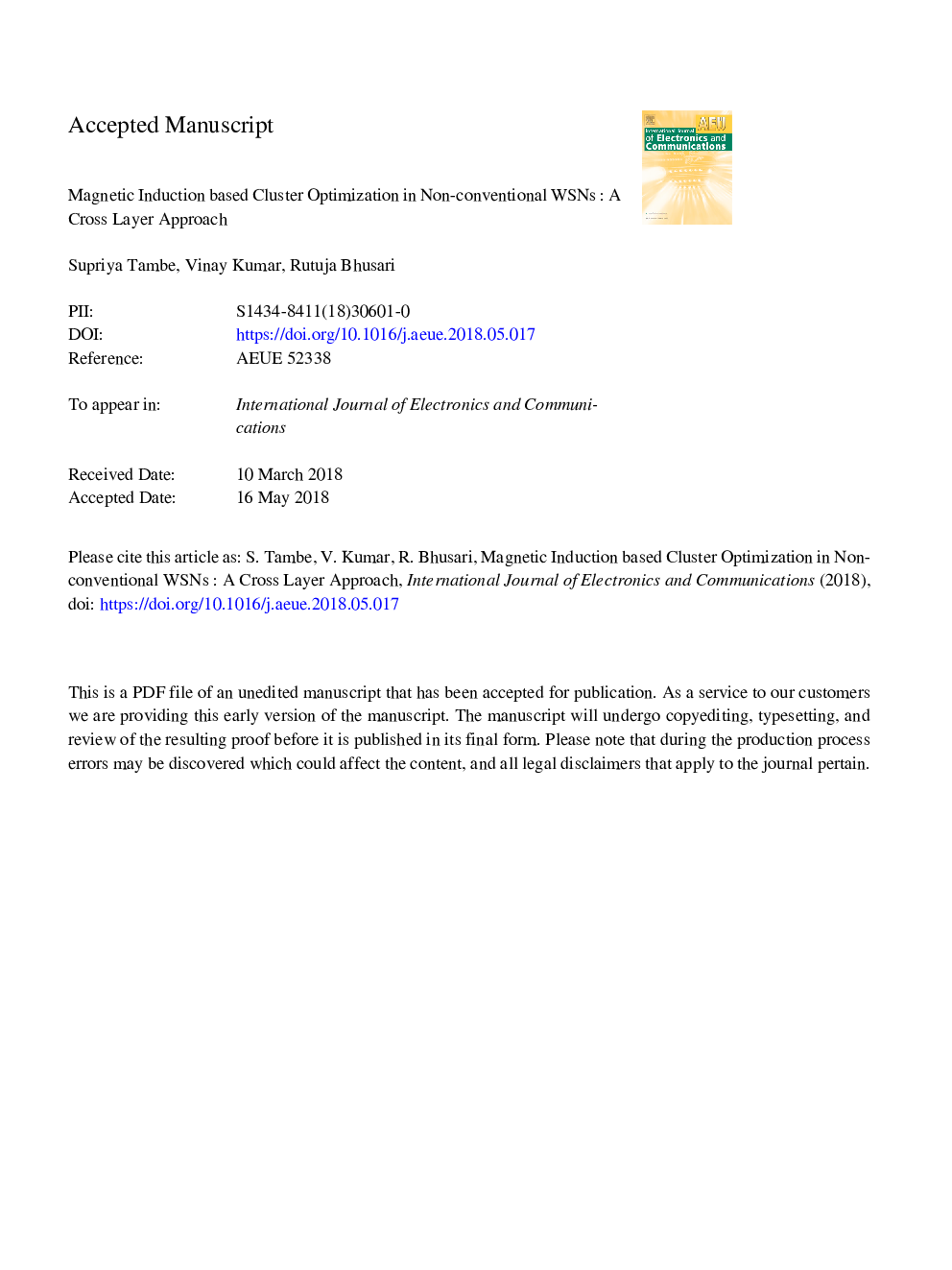| Article ID | Journal | Published Year | Pages | File Type |
|---|---|---|---|---|
| 6878962 | AEU - International Journal of Electronics and Communications | 2018 | 12 Pages |
Abstract
Conventional Radio Frequency (RF) communication technique is unsuitable for communication in non-conventional media (water, soil, rocks, etc.) because of heavy losses incurred due to dynamic channel characteristics. Magnetic Induction (MI) communication overcomes these losses as it is least affected by such varying channel characteristics. In non-conventional media based Wireless Sensor Networks (WSNs) the deployed sensor nodes cannot replace or replenish their batteries. Thus, energy consumption should be minimized and that can be achieved by clustering process. This process involves data sensing, aggregation and routing to the base station. These sub-tasks are performed under Physical (PHY), Medium Access Control (MAC) and Network (NET) layers of OSI Network model. Having lesser or larger number of clusters has different impact on energy consumption in different layers' perspective. A large number of clusters decreases energy consumption as per PHY layer whereas it results in increased energy consumption as per MAC and NET layers. Thus, a trade-off is required to minimize the overall energy consumption. To this end, we found an optimal number of clusters considering the simultaneous influence of all three layers. The above analysis is performed for three media viz. sea water, fresh water and dry soil.
Related Topics
Physical Sciences and Engineering
Computer Science
Computer Networks and Communications
Authors
Supriya Tambe, Vinay Kumar, Rutuja Bhusari,
